Subtotal: $80.00
6 Best Cross Country Shoes Every CC Runner Must Know Of
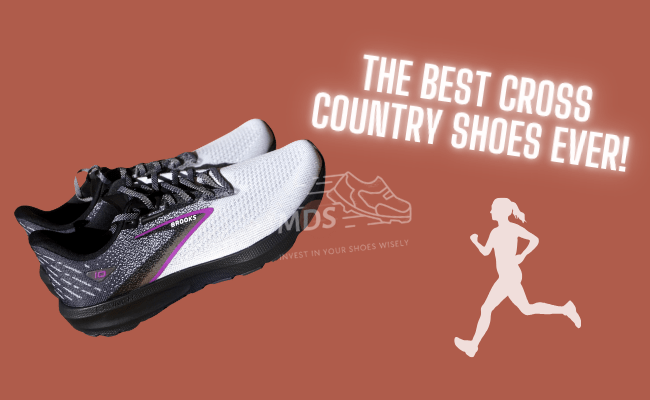
“HEY MARTIN! MY KID IS JUST STARTING RUNNING, AND I DON’T KNOW IF IT WILL LAST, SO CAN I JUST ASK HIM TO USE HIS REGULAR-SCHEMUGLAR SPORTS SHOES INSTEAD OF CROSS COUNTRY RUNNERS, FOR PRACTICE?”
I was an overconfident child- the moment I started running a little better I thought I knew everything which turned into me making the grave mistake of using flats for my practice runs instead of investing in a quality CC shoe, as my foot grew. WHAT HAPPENED? I ALMOST SPRAINED & DID A LITTLE DAMAGE TO MY BACK- which took a while to recover.
My dad was not happy with my decision & then made sure I always was wearing the best trainers. Thanks to him, from size “6 to 8 and 8 to 10,” I have had the opportunity to try some of the best cross country shoes. TBH, I have tried them all and even today I have 17 different pairs of these shoes in my garage which I keep breaking into from time to time to see which one gives me the best performance.
So- what am I doing here? From my 23 years of experience, I am going to give you a list of the best shoes according to different markers & variables to help you decide your next CC kicks.
What to consider while buying cross country shoes?
The weight, comfort, traction, and design of your CC shoes can largely determine your running experience. Make sure to test your cross country kicks for these factors:
Feet and running tendencies
The design of your feet and how you plant your feet while running on a surface matter a great deal while picking the right CC shoes. The selection should rely on the following three parameters:
Pronation
Foot pronation denotes how your foot rolls from heel to toe when you land it while walking or running. While nearly 70% of people have overpronation, where their feet turn inward at the time of contact, some people have neutral pronation, while some of them have supination making their feet turn outward at the time of contact.

To ensure comfort, safety, and agility during your cross country runs, you should pick shoes depending on your pronation level.
For example, if you deal with overpronation, shoes with inward support would be ideal for you. Similarly, in the case of supination, shoes with outward support will make your runs stable and comfortable. And in the case of neutral pronation, you can decide what type of support you wish to go for.
To know more about your foot pronation, it’s advisable to consult a foot health specialist. They may be able to suggest better, by observing your foot movement.
Best shoes for different pronations
Whether you run with overpronation, supination, or neutral pronation, your running shoes must support your feet aptly. Let’s look at some of the most suitable options that make running safer and comfortable while managing pronation.
Best runners for overpronation: Brooks Adrenaline GTS 23
As I said above, overpronation requires shoes with a wider base. That’s just what Adrenaline offers. These shoes are true to size and provide additional support to overpronated feet. Plus, the plush foam on these ensures utmost comfort for your feet as you plant your steps on the ground.
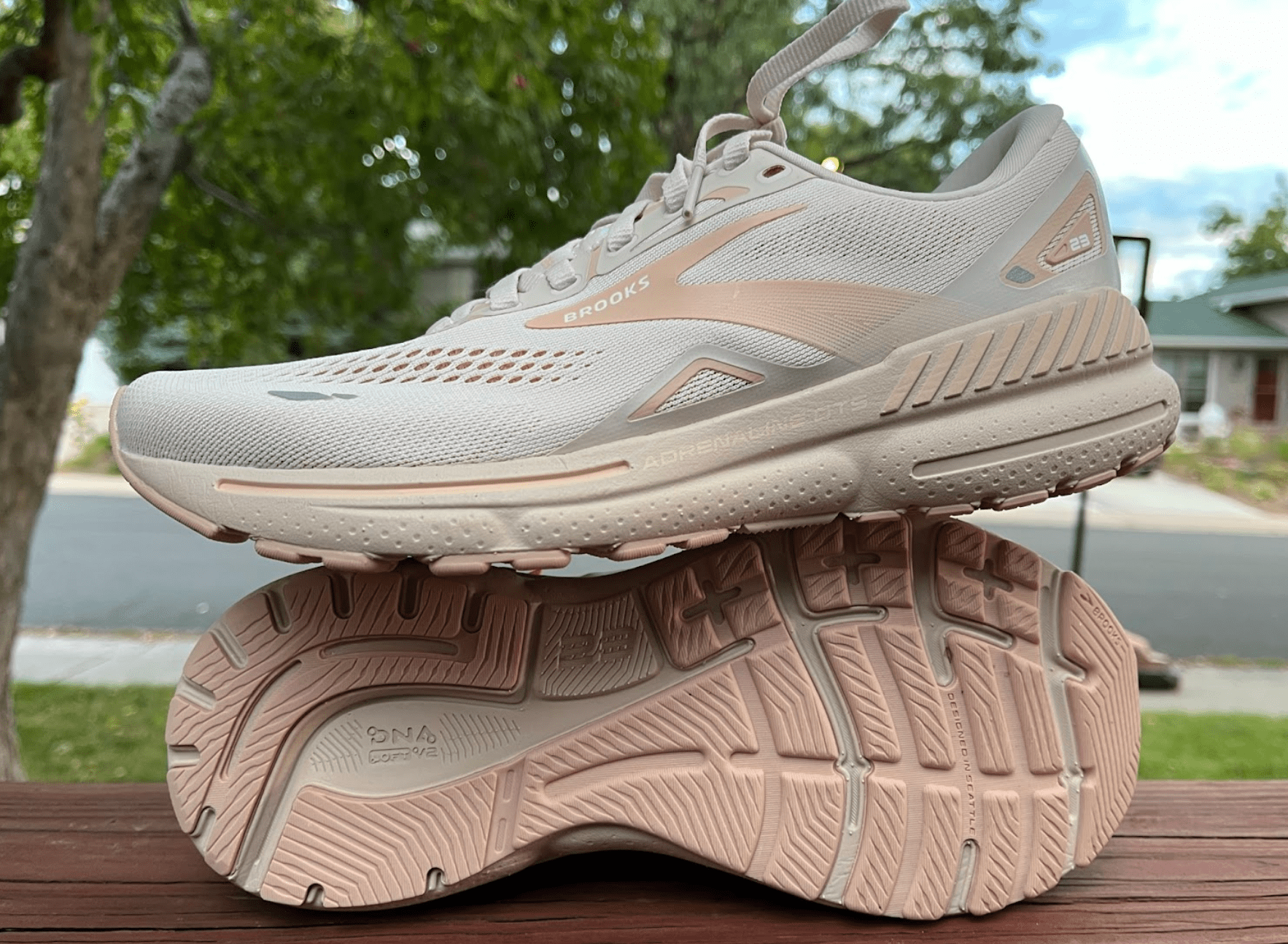
And the best part- even though this shoe has a wide base to give enough room to your feet, the soles also have rails surrounding the heel, to prevent excessive motion. If you are considering getting a pair, also note the following factors.

Shoes for supination: Nike Alphafly 3
As supination can make your feet rigid and inflexible, shoes with extra support may not make sense. In fact, shoes with additional support may often be rigid, which can worsen this condition. In this case, a neutral running shoe such as the Nike Alphafly 3 can save the day.
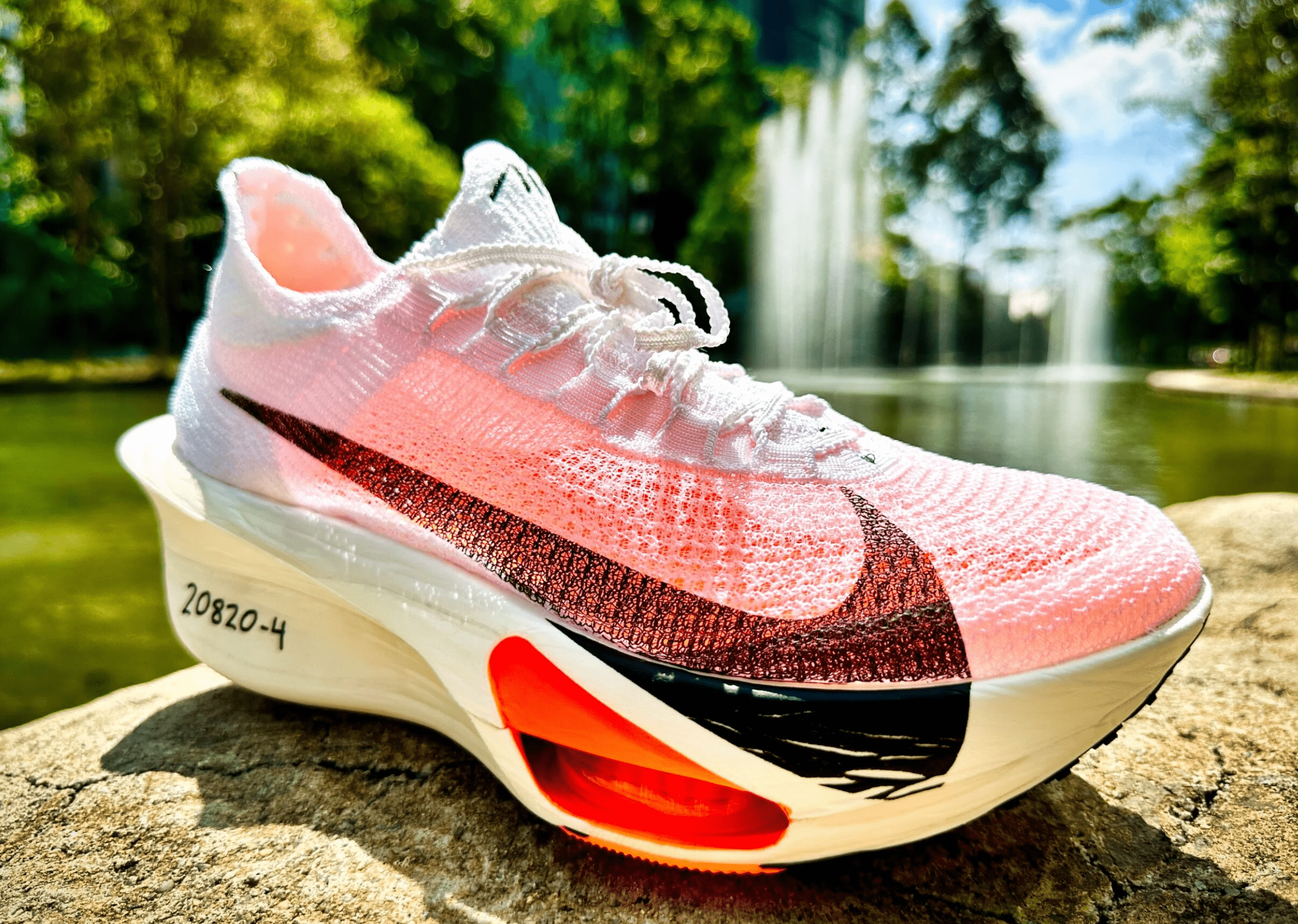
Its exciting energy rebound helped me propel further with utmost ease. The FlyPlate and Air Pods technology makes the midsole even more energetic and charged up. Plus, its ZoomX midsole rises to a skyscraper 38.1/29.6 mm stack for comfort any supinator or neutral runner would fall in love with. This shoe comes with a dual-foam setup including a plush 18.1 HA bottom layer for impact absorption and a firm 29.3 HA foam for overall support.
These features make it a great pick for any supinator’s cross country runs. Plus, the lightweight adds another great deal of comfort. Alphafly 3 weighs 7.1 oz (201 grams), which is significantly less than most average racer shoe weight- 7.7 oz (217 grams).
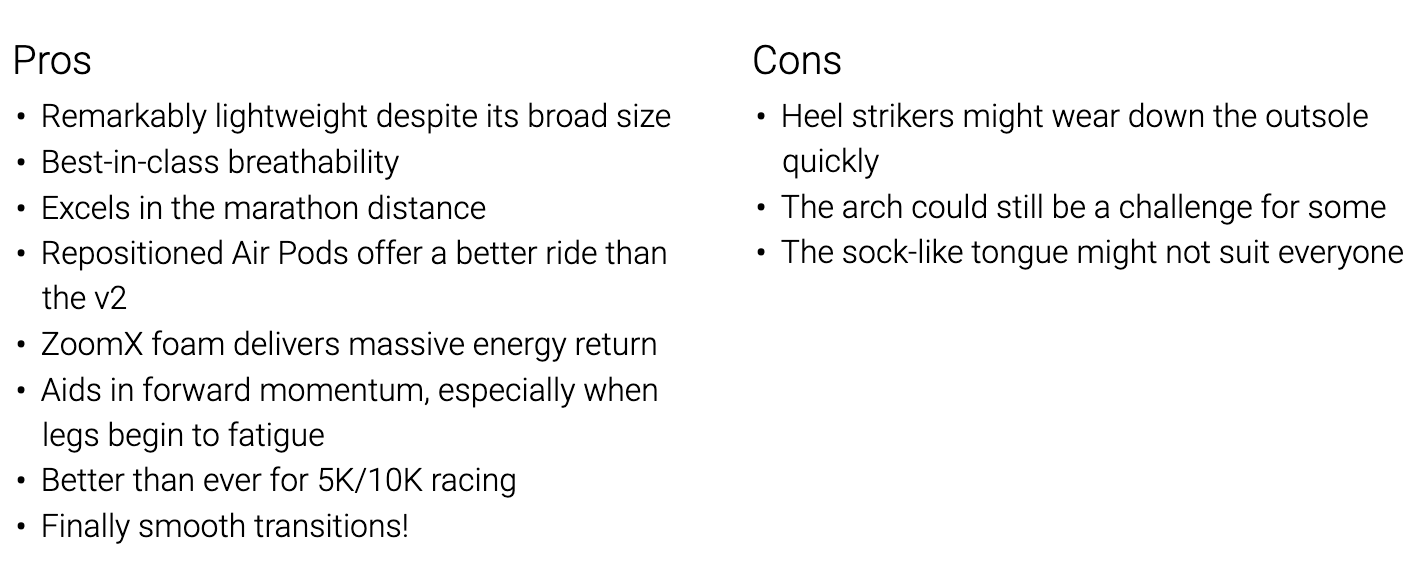
Your body weight
People with higher body weights may want their shoes to have thicker cushions. This ensures that no part of their feet lands too hard on the ground, preventing foot and sole injuries. For this particular reason, I really like the Mizuno Wave Sky 7. This shoe has a massive 30.0 mm cushioning, with an 8 mm drop, which creates a comfortable rebound, also giving good support to your feet. It also comes with an ultra-plush 3.0 HA foam, offering unparalleled softness, while the main Enerzy foam boasts a balanced 22.0 HA so you don’t sink into the midsole.
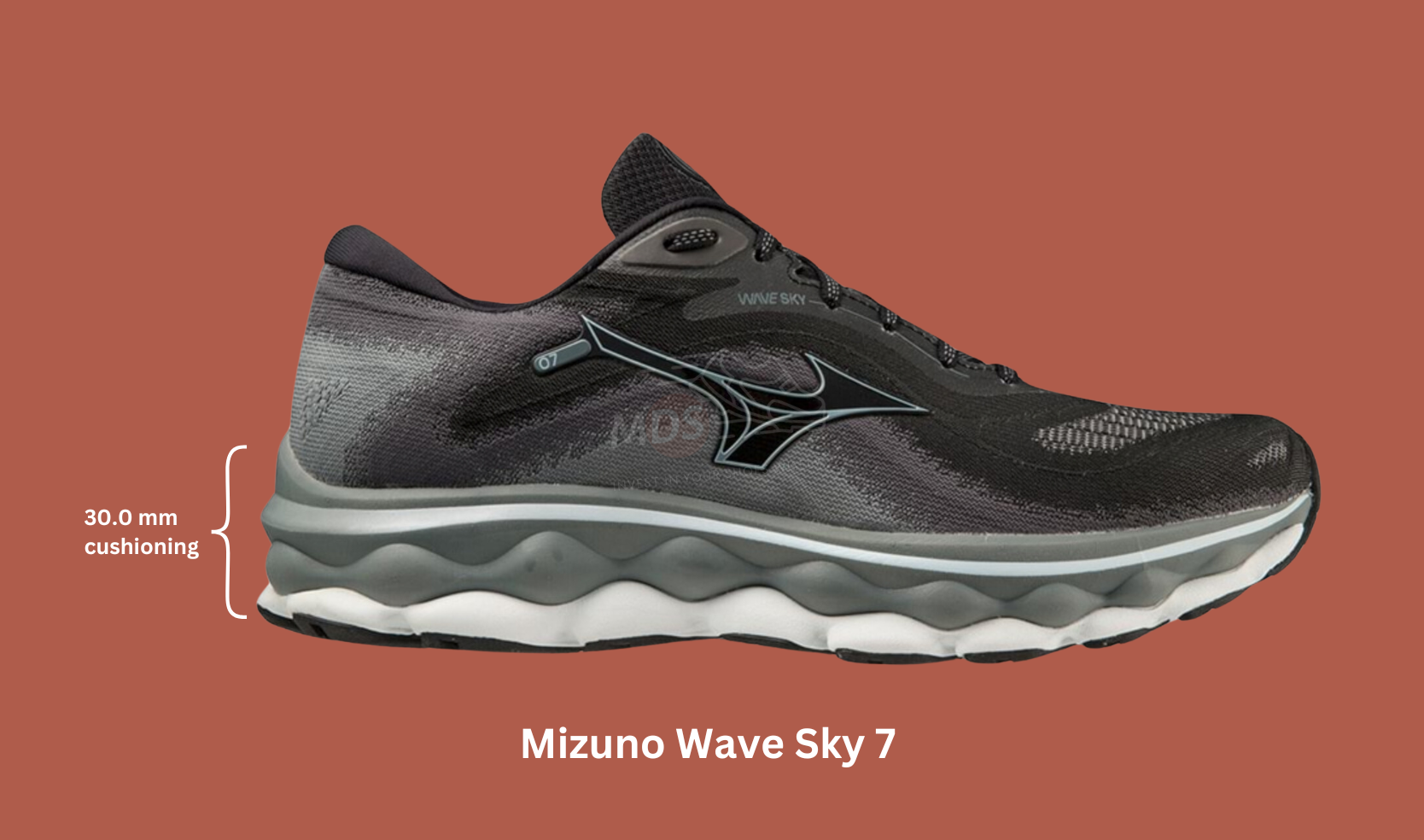
However, the cushioning and foam on this shoe add largely to the weight pushing it up to around 10.4 oz (296 grams) (11.33% higher than average cross country runners), which may hinder running speeds. Here’s a list of why this may shoe may or may not be the best fit for you.
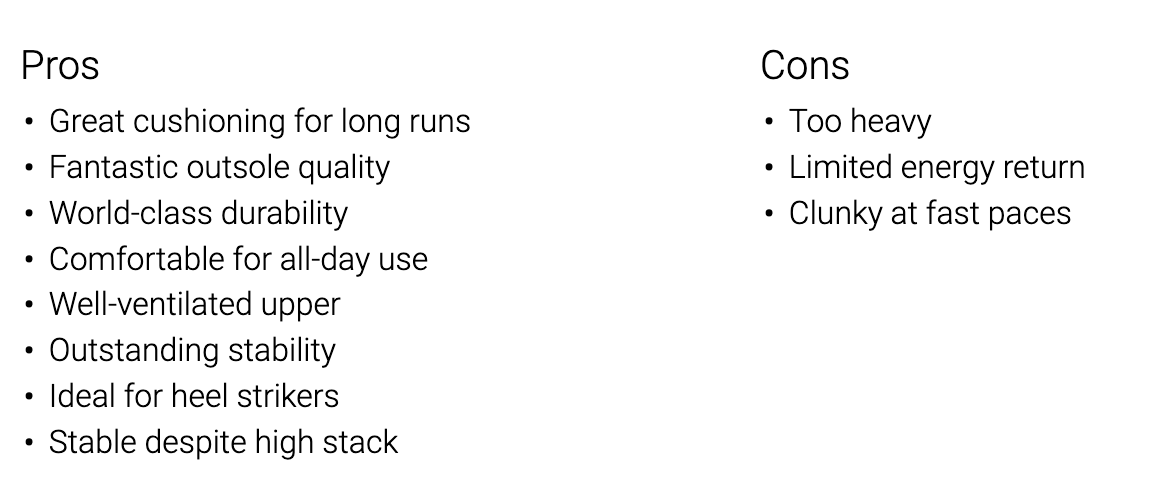
Shoe weight
In the most ideal cases, the best cross country running shoes weigh not more than 0.75 LB (340 grams). Buying shoes that are this light will ease the load of running and help you run longer miles without getting tired.
For example, I love how Practical Health on YouTube explains the importance and impact of shoe weight difference. He says, Nike ZoomX Vaporfly Next% weighs 0.42 LB (190 grams), while Hoka Bondi 7 shoes weigh 0.67 LB (303 grams).
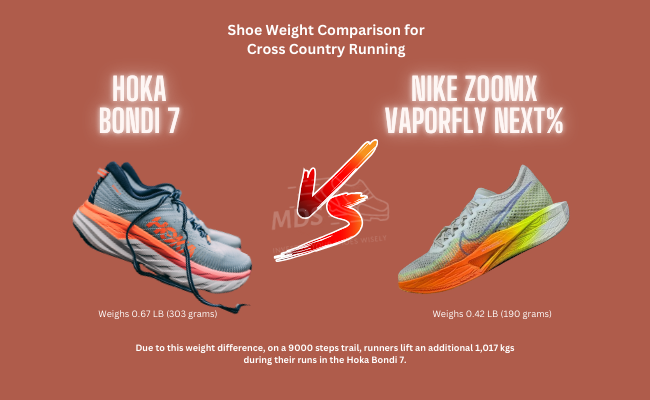
Now, if you take 180 steps per minute and run around 6.3 miles (10 kilometers) in 50 minutes, you will take nearly 9,000 steps. Considering the 113 grams of weight difference between these shoes, you will be lifting up an additional 1,017 kilograms during your run in the Hoka Bondi 7. This can make your longer runs undesirably tiresome.
Now, I am not saying Hoka Bondi 7 isn’t a good shoe for cross country. It’s a comfortable pair, offering enough cushion support for anyone who runs with supination. However, if lighter footwear and faster speeds are your preferences, you may consider looking for alternatives.
The weight of your shoes can largely determine the comfort and longevity of your long runs and longer career. Make sure you make a wise choice.
Comfort
In the last example, I showed you how Nike’s Zoom Vaporfly helps take off the load that a Hoka Bondi 7 could have added to your legs. However, that’s not the only factor that matters.
The weight difference may compound greatly on longer runs, but when you are looking for comfort, the cushion will ensure that your feet don’t land hard on the surface. Plus the sides of the Hoka Bondi (and many other shoes) are designed to provide additional support while running.
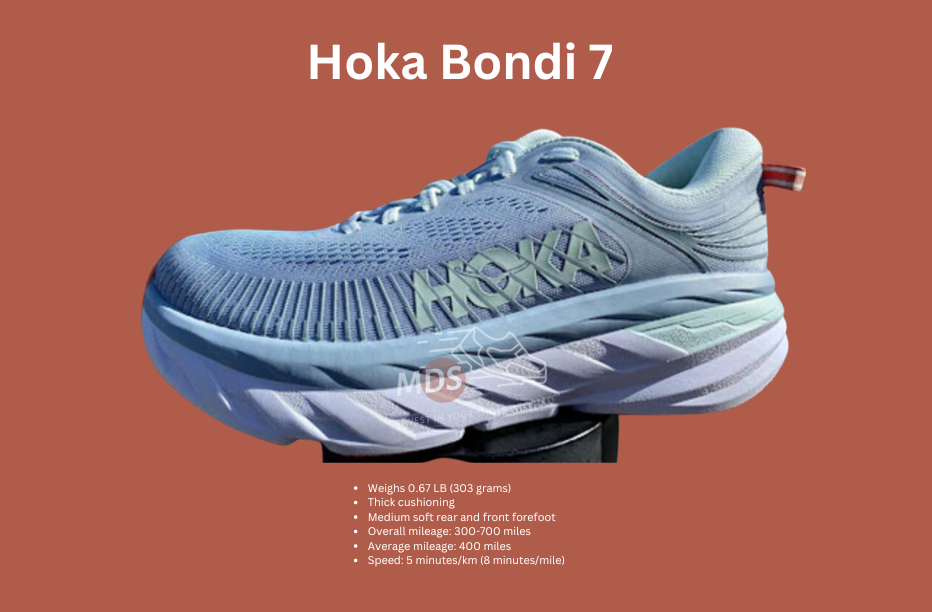
Plus, this is a durable shoe with an average mileage of 400 miles and a capability of covering 1 kilometer every five minutes (1 mile every 8 minutes). This makes it a great choice for runners getting into the habit of running cross country and wanting to ensure foot safety and proper support while prioritizing performance and minimizing the recovery time.
Apart from that, since CC runs can be long, it’s advisable to wear shoes that have some extra room in the toe box. Kicks that are too tight may snug closely by the end of the race.
Grip and traction
As you start your cross country journey, you must ensure to get a good pair of shoes that offers proper grip and traction. Cross country runs usually involve running on uneven surfaces that include muddy terrains, forest trails, pavements, and whatnot!
As a beginner CC runner, you can go for shoes with a flatter sole to allow yourself to embrace the sport. However, as your experience grows, you may feel the need to buy shoes specific to your running needs.
For example, if you are participating in a cross-country race that’s only going to take you through forest trails, muddy surfaces, and grass, shoes with spikes on the foresole will be suitable for you. However, if the run also includes a pavement or concrete trail, you may need shoes with a stronger rubber grip, and short, flexible rubber spikes that grip well across a range of surfaces.
Surface
The kind of surface you are planning to run on will straight-up impact the shoes you pick. As I said above, you can not use metal spikes on pavements and rubber grips on a rainy-grassy forest trail. Similarly, heavier shoes will not be suitable for a beach run.
To make it easier, the table below can help you pick shoes for different surfaces.
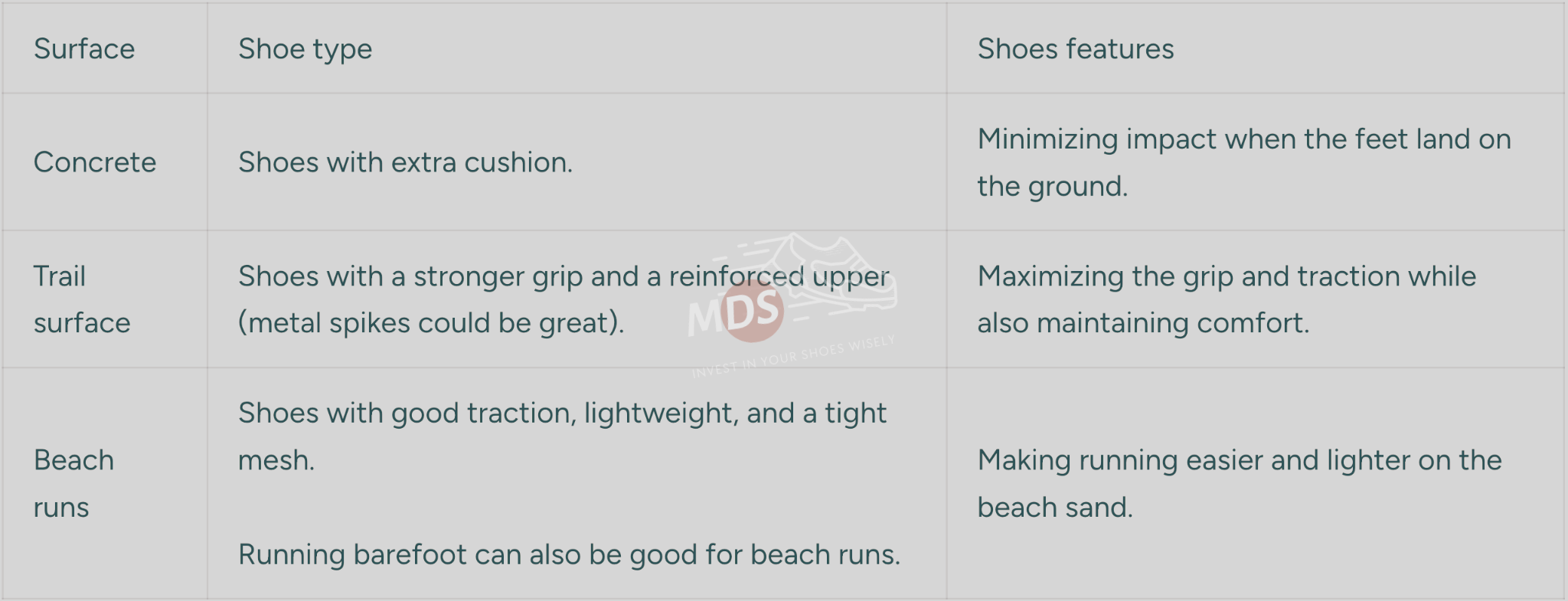
So, which are the best cross country running shoes?
Here’s a list of shoes that are specially meant for long, cross country runs.
1. Brooks Launch 10 Cross Country Sneaker (Beginner’s best friend)
At the start of your cross country running journey, you may not require aggressive traction or tons of cushioning. As beginner runners, most individuals look for versatile shoes that can let them feel the ground and perform optimally across a wide range of surfaces. This is where a pair of Launch 10 can save the day. The moderate amount of cushioning on this shoe helps runners maintain a natural stride, and its rubber grip ensures great traction across most surfaces. Apart from that, these shoes weigh between 209 to 230 grams, with a shoe drop of 10 mm.
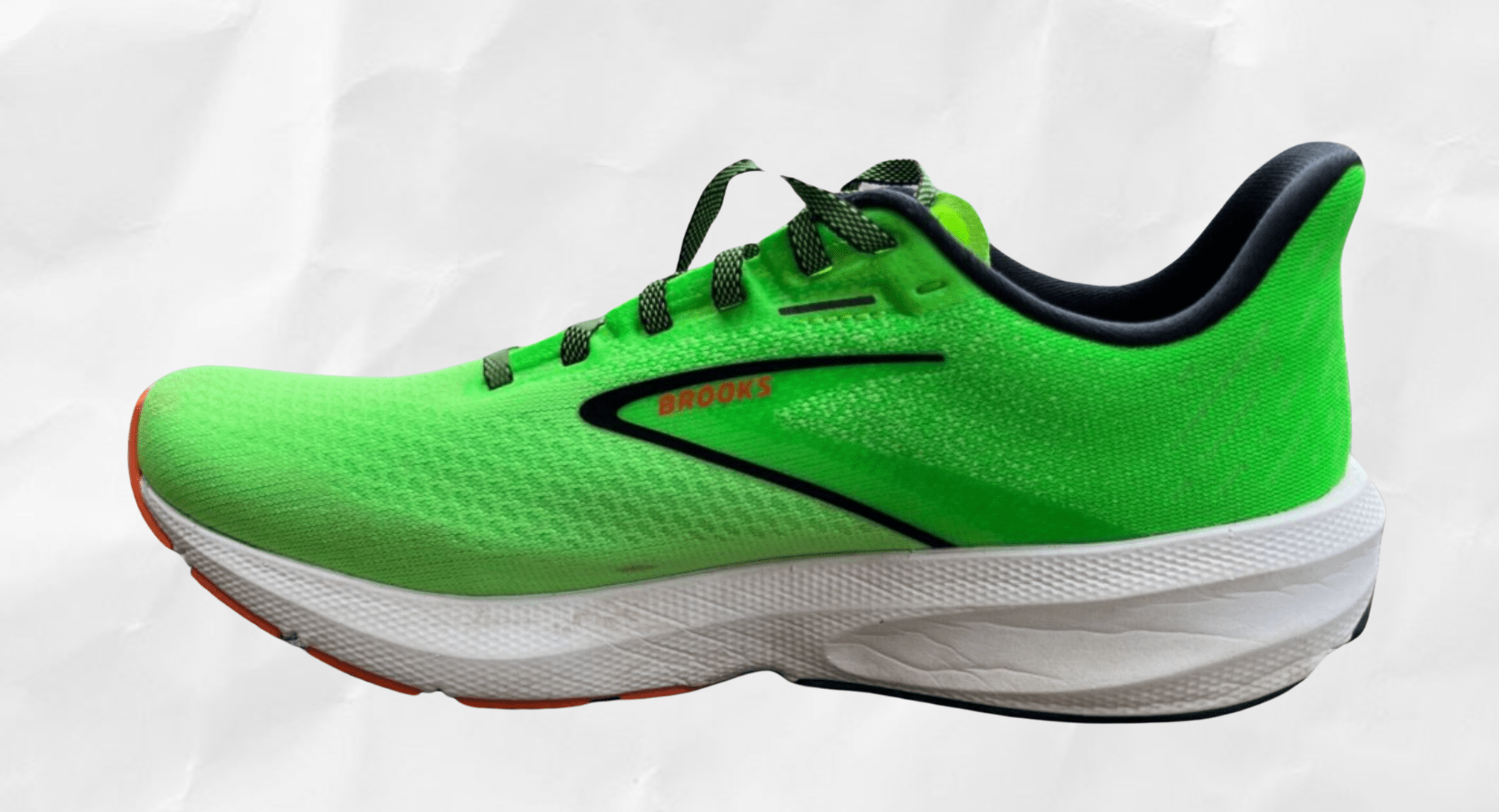
The lightweight of these shoes, their comfortable upper, and a balanced midsole make these shoes fit for most terrains and running styles. And as you start your running career, these shoes will come at a reasonable price, allowing you to replace them as and when you upskill and know the sport better.
All-in-all, Brooks Launch 10 can empower you as a beginner cross runner, and also not burn a hole in your pocket; especially, when you are just starting out.
2. Brooks Draft XC Spikeless Supportive Cross-Country Running Shoe (Spikeless legend)
If you are looking for shoes that perform well on concrete and running tracks, Draft XC can be a good idea. These are super-lightweight (161.59 grams), super flexible, and have a superb ground feel.
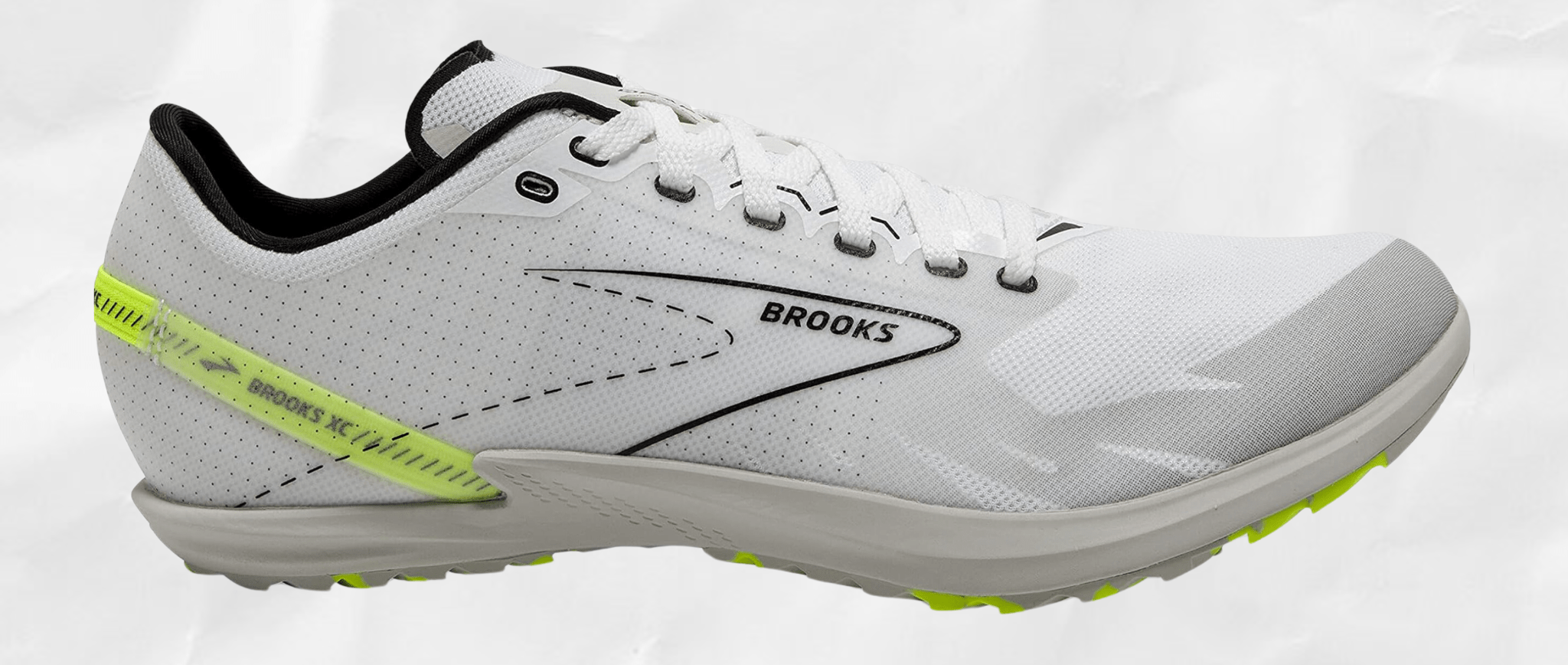
As these shoes don’t come with spikes, they are fit for running on pavements, but, that’s also not it. Their superior grip will you to run comfortably and safely on wet and moderately soft surfaces. These shoes also feel great on the feet, as their flexible and breathable upper helps manage perspiration. Apart from that, their responsive midsole can help propel you forward.
Ideally, I would love to wear these shoes for track events or cross country races happening in drier climates—primarily because these may not be the best for soggy-muddy surfaces.
3. Nike Zoom Rival Multi-Track and Field Shoes (Spikes)
Spikes suit perfectly for terrains that are muddy, grassy, or wet, and when you go out looking for spikes, Nike Zoom Rival shoes could be one of your best bets. Their all-around quality and multi-track support make them perfect for a range of running activities such as pole vaulting, forest trail running, cross country running, and whatnot!

However, as these are metal spikes, they won’t support you while running (or even walking) on pavements. Another great thing about these is their lightweight. Weighing at only 5.8 ounces (164 grams), these let your feet feel light, allowing you to run more quickly and safely across a range of surfaces. The upper on these shoes are comfortable and breathable, plus, these shoes are super-durable and will most probably pass all tests of time. All-in-all, for something under $100, these are totally bang-on.
4. Saucony Ride 17 Cross Country Sneaker (Daily trainers)
This is one of the most perfect daily training shoes, which are great for running fast, going for moderate runs, and cross country running. The comfort of these is almost unmatchable, plus, these offer great flexibility.
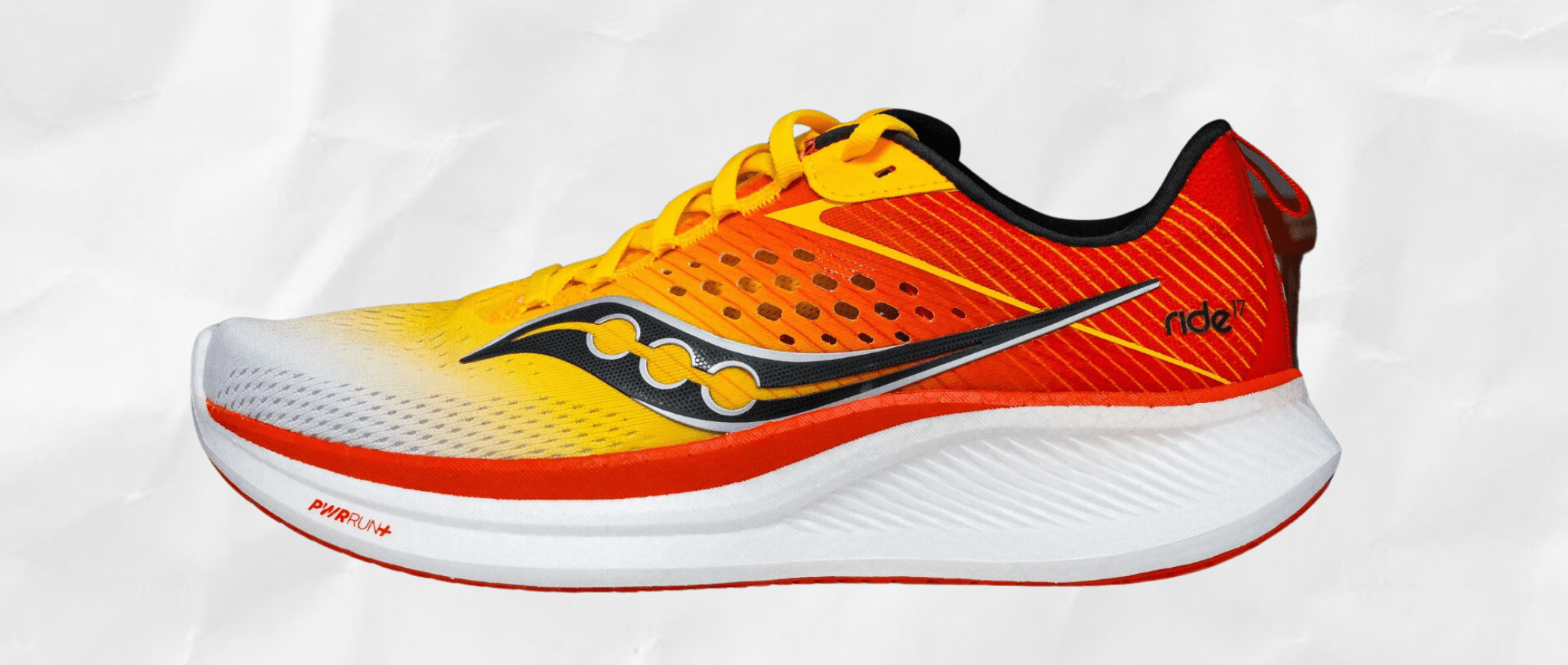
However, the cushioning on these may come off as more than you’d want on your CC running shoes. But, for day training, this is just the perfect pair of shoes for under $150. Also, one thing to note is that the extra cushion adds extra weight to these trainers making them slightly heavier than others on this list, weighing 9.9 ounces (280.66 grams).
Apart from that, Saucony’s new midsole allows these to deliver great energy return. These shoes come with a promise of quality, great durability, and acceptance for rough off-road treatment.
5. On Cloudsurfer Trail Waterproof Cross Country Shoes
If you want more and more from your cross country shoes, On Cloudsurfer could be an ideal choice. This shoe is waterproof (yes, the name suggests that), has great cushioning (you can see that in the picture), and its midsole throws you forward in surprising ways. Also, the midsole’s design is such that it somehow smoothened my transition from toe to heel while I was running. But, this has a downside to it—at times, you may lose stability due to this midsole.
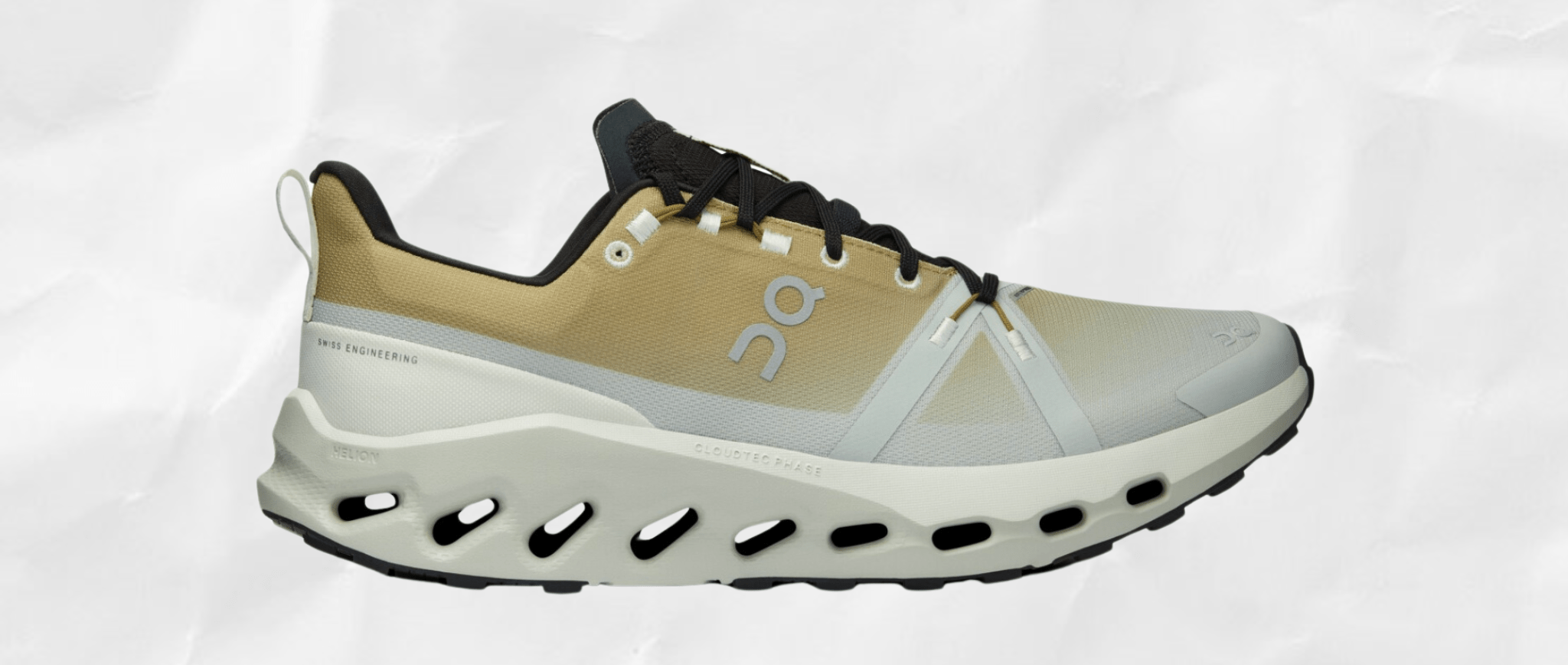
The shoe’s design makes it suitable for a wide range of surfaces including concrete/road + forest trails, making it great for transitioning between different surfaces. However, these are not the best while running in mud (that’s a grip issue that the brand may want to look into).
6. Saucony Peregrine 14 Cross Country Shoe (most suited for cross country running)
This is one of the most versatile and the most suitable pair of shoes for cross country running. The studded fell-style traction on this shoe is deep and offers great grip. Plus, the outsole grip and protection to boot are almost surprisingly natural. The deep grip lugs (5mm) hold tightly on wet and soft surfaces, and pavements as well—truly ideal for cross country runs.
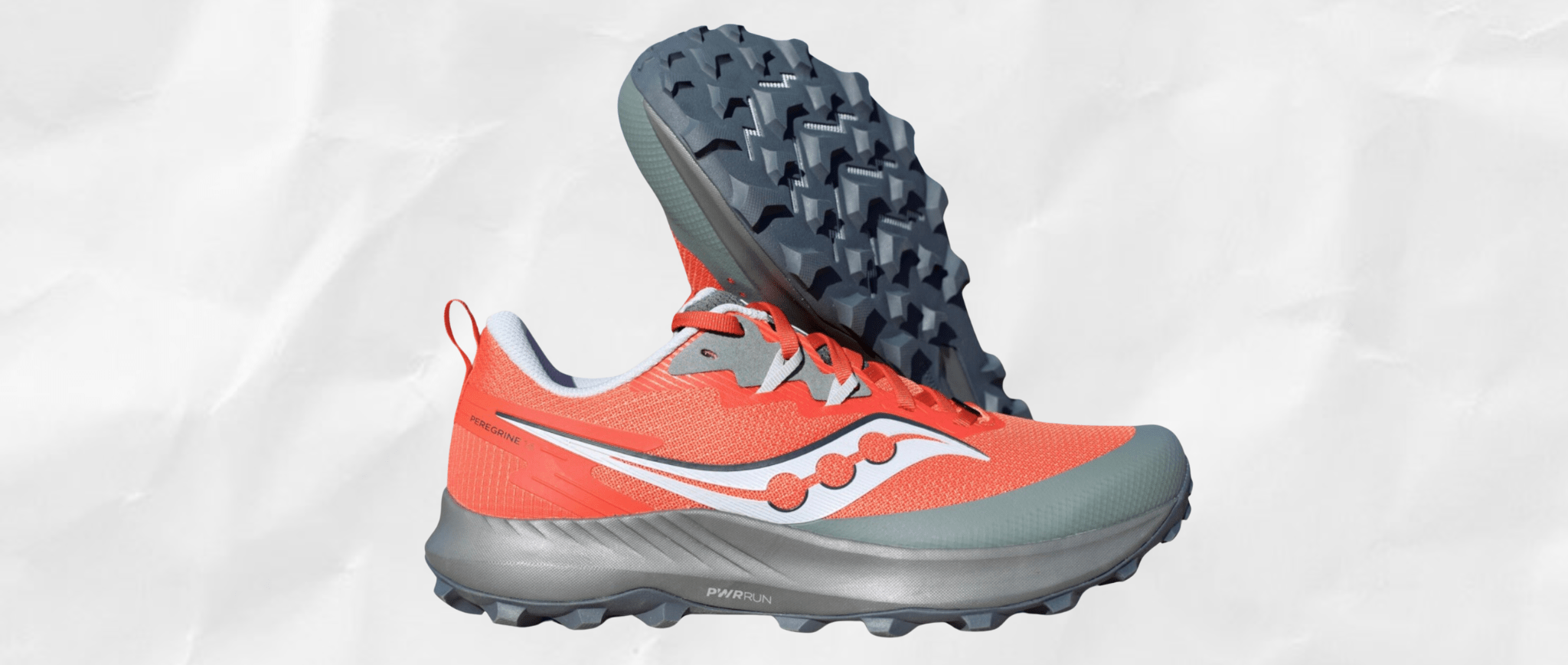
Apart from that, the shoes can come off as superlight for trail running. Whether you are running on a flat surface or a hard, dusty, or muddy trail, Pergrines can offer unmatched performance. However, it’s important to note that the upper on these shoes can be somewhat hard and stiff, also inhibiting the energy return. But, regardless, speaking of comfort and versatility, Saucony Peregrine 14 stands tall.
Marty’s two cents
Well, well, well. Finding the right cross country shoes can be a long run for you. There’s a ton of factors one must consider while picking a CC shoe. But, here’s my advice—don’t rely on only one pair of kicks for all your cross country runs. As some runs could take you across concrete roads, others may take you through forest trails. To maintain the comfort, agility, and safety of your feet, different trails should be treated with different types of footwear. And in this blog, I tried to cover all the crucial aspects of selecting the best shoes for cross country running. I hope you found this useful.
FAQs
Now, let’s look at some of the most common questions and answers that’ll help you pick the best cross country shoes for yourself.
1. What are the best shoes for cross country?
As you start looking for the best cross country running shoes, you may come across a wide range of footwear options. However, to pick a pair that best suits your needs, it’s crucial to consider factors such as your feet and running tendencies, your pronation and running technique, your body weight, the weight of your shoes, the comfort and traction you are looking for, and the budget you are looking in.
However, to make the selection easier, you can go through the options I have mentioned above. If you have any specific questions regarding these products, you can write to me at: [email protected].
2. Do you need special shoes for cross country?
Oftentimes, cross country runs can take you across a wide range of surfaces. For example, one of these races that I participated in earlier this year took me through a beach, a road, a small forest trail, and a longer muddy track. Now, in this case, I couldn’t have chosen to run in my spikes as that wouldn’t be fit for concrete. Similarly, I couldn’t have used flats, since they could have slipped on wet forest surfaces. In this case, I used the Saucony Peregrine 14, since it has great grip, is suitable for a range of surfaces that I needed to run, doesn’t weigh too much, and has sufficient support.
So, yes, while picking a pair of CC shoes, you must keep in mind your specific requirements.

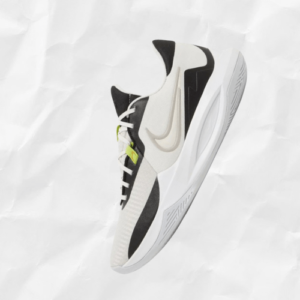 NIKE PRECISION 6 PHANTOM LIGHT IRON ORE
NIKE PRECISION 6 PHANTOM LIGHT IRON ORE